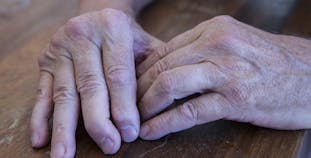April 27, 2022
Advance Online

Advance Online
Psoriatic Arthritis or Rheumatoid Arthritis?
Dr. Cassandra Calabrese explains the similarities and differences between PsA and RA.

Dr. Cassandra Calabrese explains the similarities and differences between PsA and RA.
We use cookies to offer you a better experience and analyze our site traffic. By continuing to use this website, you consent to the use of cookies in accordance with our Privacy Policy.